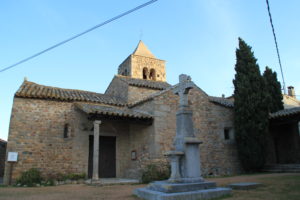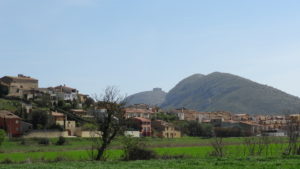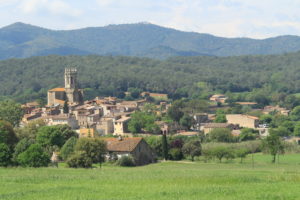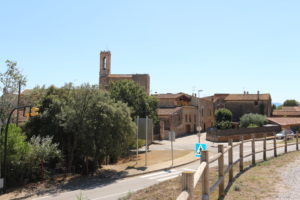Begur
-
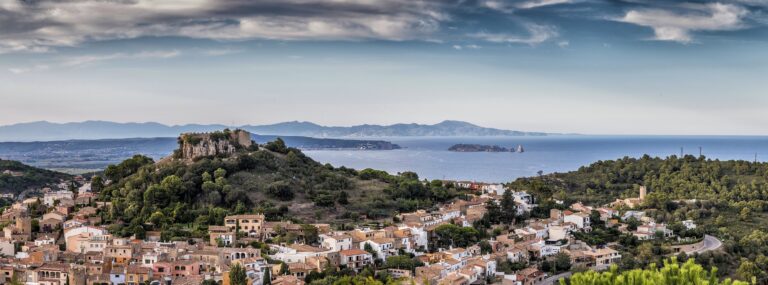
Photo: Ajuntament de Begur
Positioned at the heart of the Empordà district, the town of Begur, with around 4.000 inhabitants and its beaches are one of the most wonderful spots on the Costa Brava. The municipality is made up of a number of hills known as the Begur Massif, and a stretch of coastline lapped by the waves of the Mediterranean.
Both Begur old town, with the numerous landmarks that represent the legacy of key points in its history, and the small Romanesque settlement of Esclanyà, as well as the eight coves and small beaches that lie within its boundaries, make up a setting of unrivalled landscape.
Begur is a town with a profound sense of history. Protected by the mediaeval castle, coral collectors, fishermen, returned colonists and cork makers have written the splendid pages of a history reflected on every street, in every house and corner of the town.
The most famous image of Begur is undoubtedly the mediaeval castle that overlooks the town, although there are plenty of other places of interest to visit, such as the numerous “Indies” houses (built in the colonial style by townsfolk who emigrated to the Americas in the 19th century, fleeing the economic crisis of the era, and subsequently returned from the colonies with a considerable fortune), the 16th-century defensive towers (a legacy of the period when pirates sailed the Mediterranean, built by the people of Begur to protect themselves against attack), the church (built in the Gothic style and dedicated to St Peter), as well as such other historic buildings as the Cultural Centre and the Old School.
Esclanyà lies within the municipality of Begur, in the north-west of the borough. The village is grouped around the Church of Sant Esteve d’Esclanyà, for which documented records date back to the year 1280. The building features distinctive of different periods of the Romanesque from the 10th century onwards, suggesting the existence of an earlier place of worship.
If you visit the coast of Begur, you will find three different and separate beach areas, which we can divide by their orientation: the north area where the north coastal path is, the east area with the east coastal path and the south area which also has a coastal path. Starting in the north, the main cove is Sa Riera. From here, you can follow the coastal path to Platja del Racó passing through the cove of Illa Roja, which as its name – red island – suggests, is overlooked by a reddish rock.Continuing along the itinerary of the coastal paths, you head to the east area, where you start to follow the coastal path by the little cove of S’Eixugador, where you can admire the majestic Cap de Begur headland. If you continue following the coast, you pass the cove of Sa Tuna and eventually come to the little cove of Aiguafreda.To complete these coastal paths, head to the south area, starting by the cove of Aiguablava and then continuing all along the coastline, passing the various coves that make up Fornells and finally arriving at Platja Fonda, which is known for its dark sand.These coastal paths let you discover in depth all of Begur’s coastline, as the three different routes enable you to explore all of its coves and beaches. These paths are suitable for all levels to enjoy a walk by the sea with unbeatable views.
The area’s wide gastronomic offer and the wealth of the produce of the region means they can put on a campaign dedicated to rockfish, the star product of the town. This campaign takes place in the months of April and May, with a wide range of menus based on rockfish.The town celebrates two festes majors or feast days, as it has male and female patrons. The Festa Major de Sant Pere (June) is the starting point for the summer as it is the first of the season, and the Festa Major de Santa Reparada (September) brings the summer to a close.
Finally, one of the town’s distinguishing features is a very important celebration based around the municipality’s history, specifically the legacy of the Indianos – people who made their fortune in the Americas before returning home. This is the Indianos Festival, which has become a reference point in the calendar of the municipality and takes place during the first weekend of September, with each edition being dedicated to a different theme.
-
Dades de contacte:
Oficina de Turisme de Begur
Av. Onze de Setembre, 5
17255 Begur
T. +34 972 62 45 20
turisme@begur.cathttps://www.facebook.com/TurismeBegur/
https://twitter.com/BegurEsAutentic
https://www.instagram.com/beguresautentic/
COMPARTEIX A LES XARXES SOCIALS:





